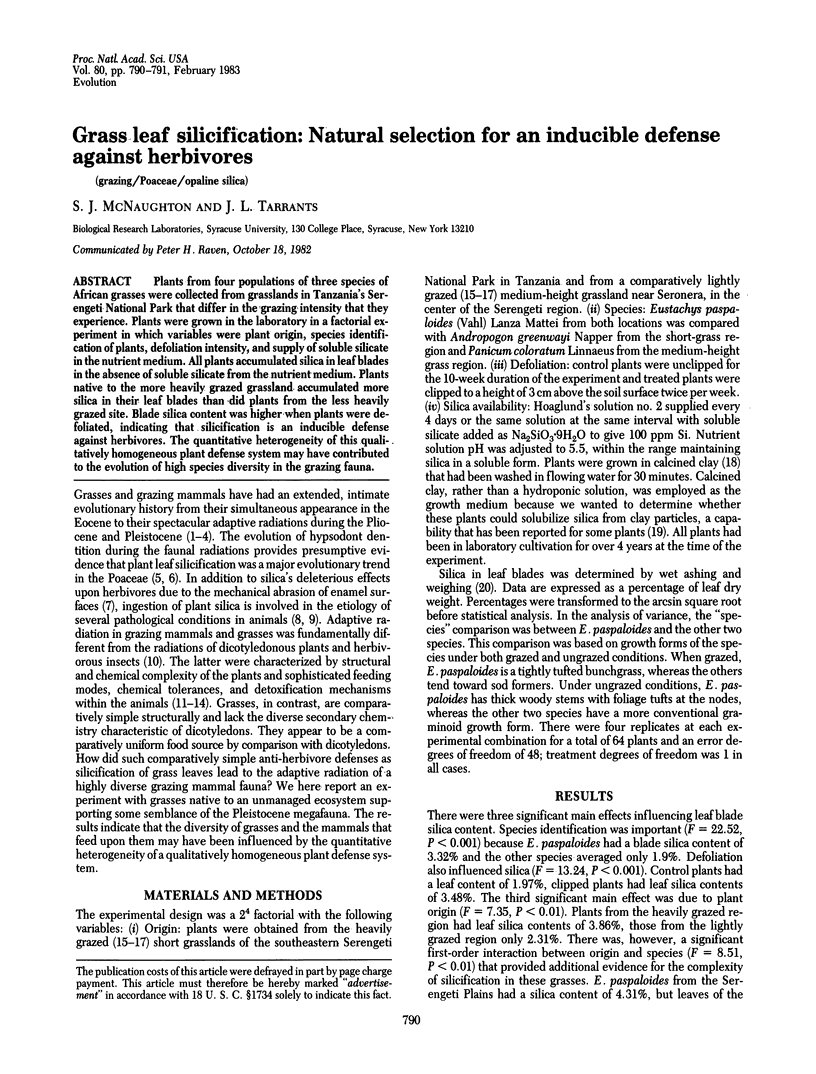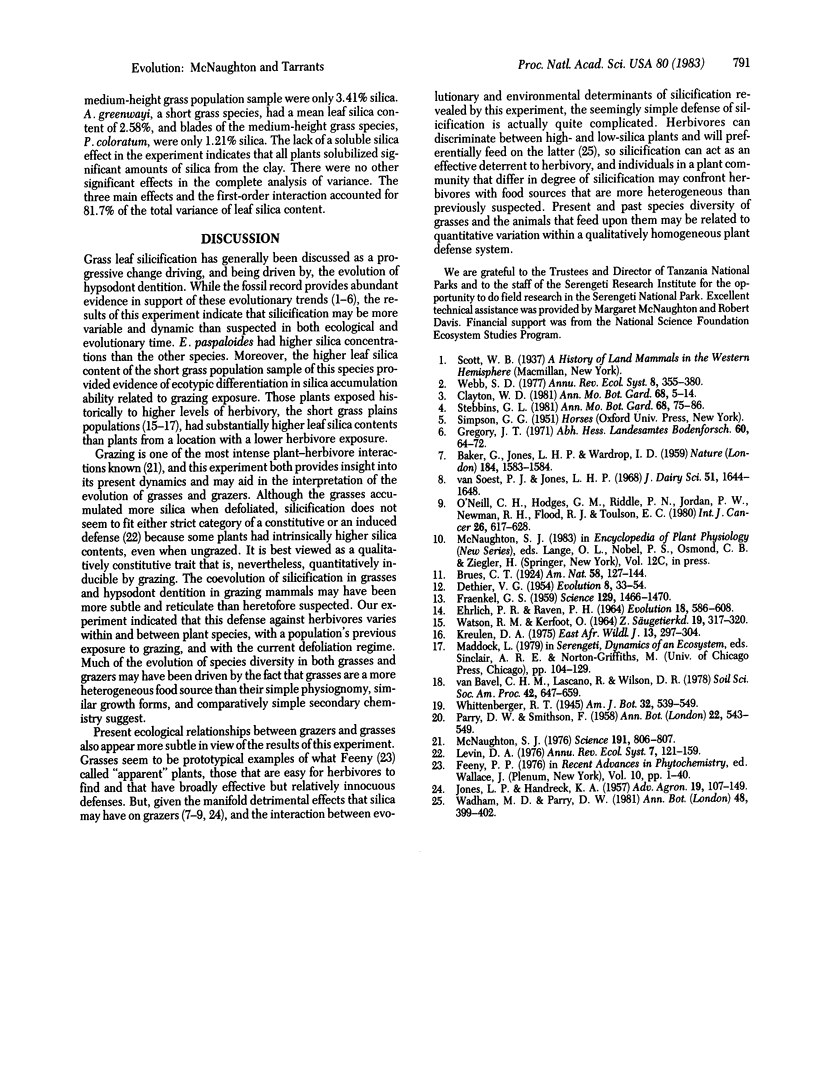Abstract
Plants from four populations of three species of African grasses were collected from grasslands in Tanzania's Serengeti National Park that differ in the grazing intensity that they experience. Plants were grown in the laboratory in a factorial experiment in which variables were plant origin, species identification of plants, defoliation intensity, and supply of soluble silicate in the nutrient medium. All plants accumulated silica in leaf blades in the absence of soluble silicate from the nutrient medium. Plants native to the more heavily grazed grassland accumulated more silica in their leaf blades than did plants from the less heavily grazed site. Blade silica content was higher when plants were defoliated, indicating that silicification is an inducible defense against herbivores. The quantitative heterogeneity of this qualitatively homogeneous plant defense system may have contributed to the evolution of high species diversity in the grazing fauna.
Keywords: grazing, Poaceae, opaline silica
Full text
PDF

Selected References
These references are in PubMed. This may not be the complete list of references from this article.
- BAKER G., JONES L. H., WARDROP I. D. Cause of wear in sheeps' teeth. Nature. 1959 Nov 14;184(Suppl 20):1583–1584. doi: 10.1038/1841583b0. [DOI] [PubMed] [Google Scholar]
- FRAENKEL G. S. The raison d'etre of secondary plant substances; these odd chemicals arose as a means of protecting plants from insects and now guide insects to food. Science. 1959 May 29;129(3361):1466–1470. doi: 10.1126/science.129.3361.1466. [DOI] [PubMed] [Google Scholar]
- O'Neill C. H., Hodges G. M., Riddle P. N., Jordan P. W., Newman R. H., Flood R. J., Toulson E. C. A fine fibrous silica contaminant of flour in the high oesophageal cancer area of north-east Iran. Int J Cancer. 1980 Nov 15;26(5):617–628. doi: 10.1002/ijc.2910260514. [DOI] [PubMed] [Google Scholar]


